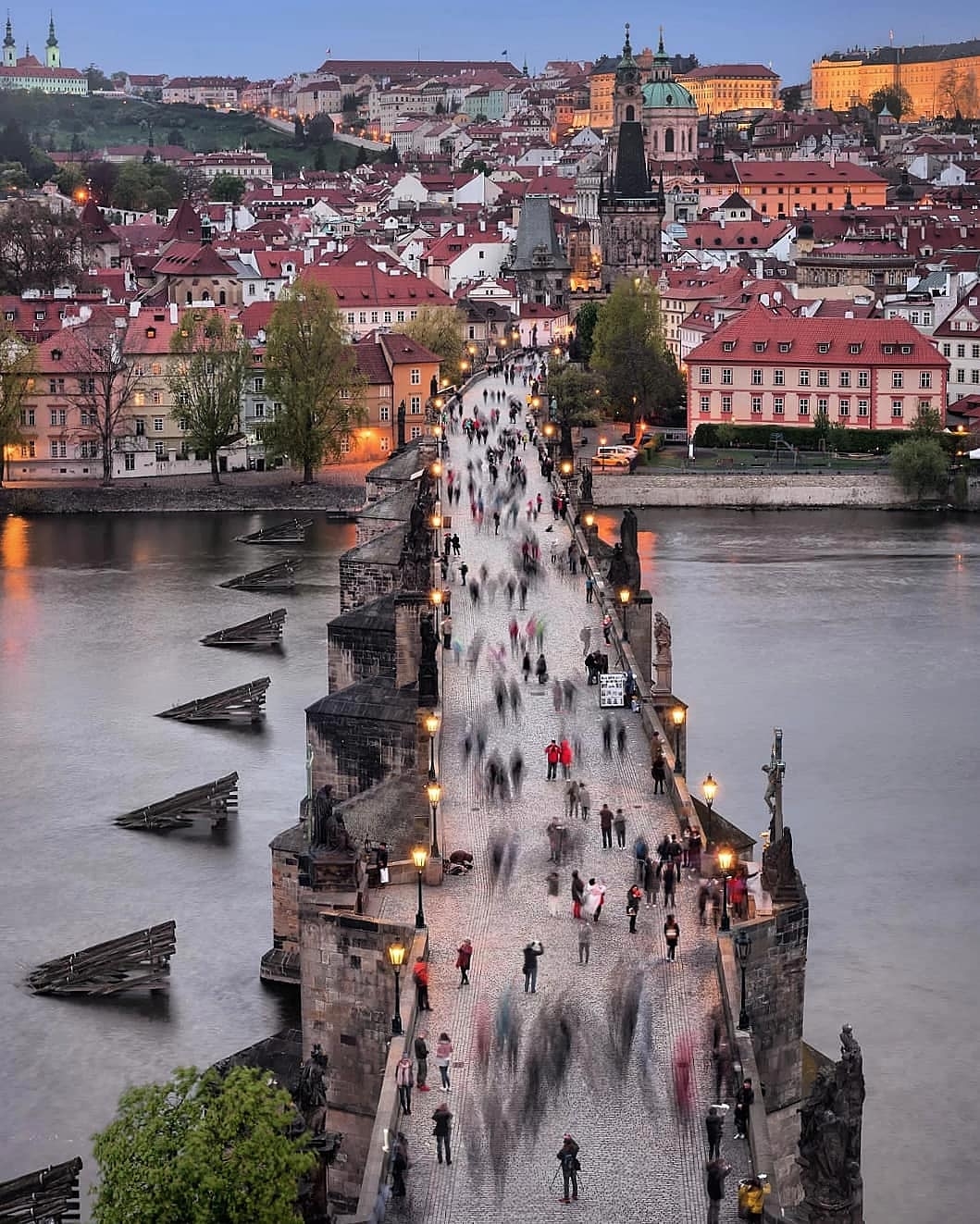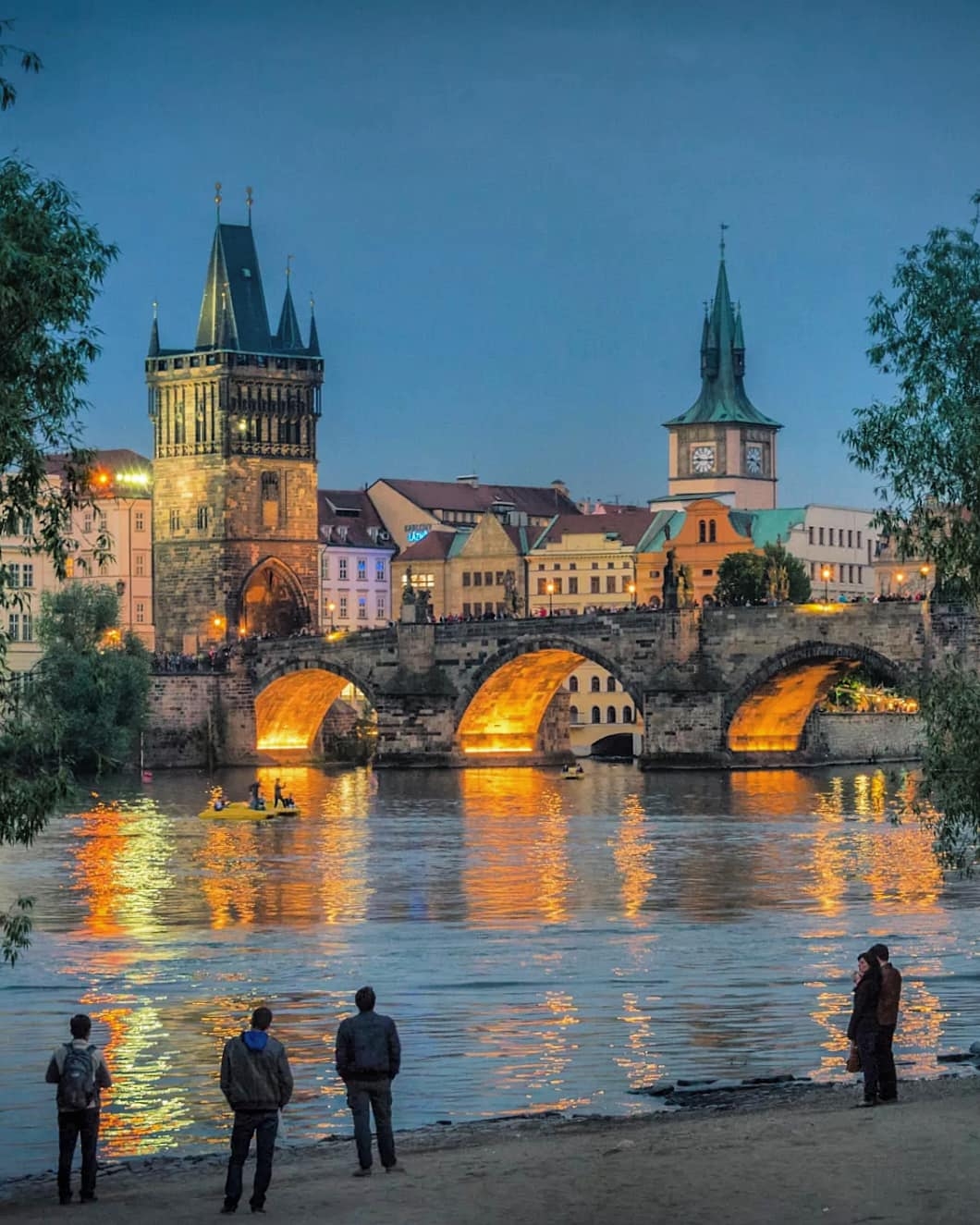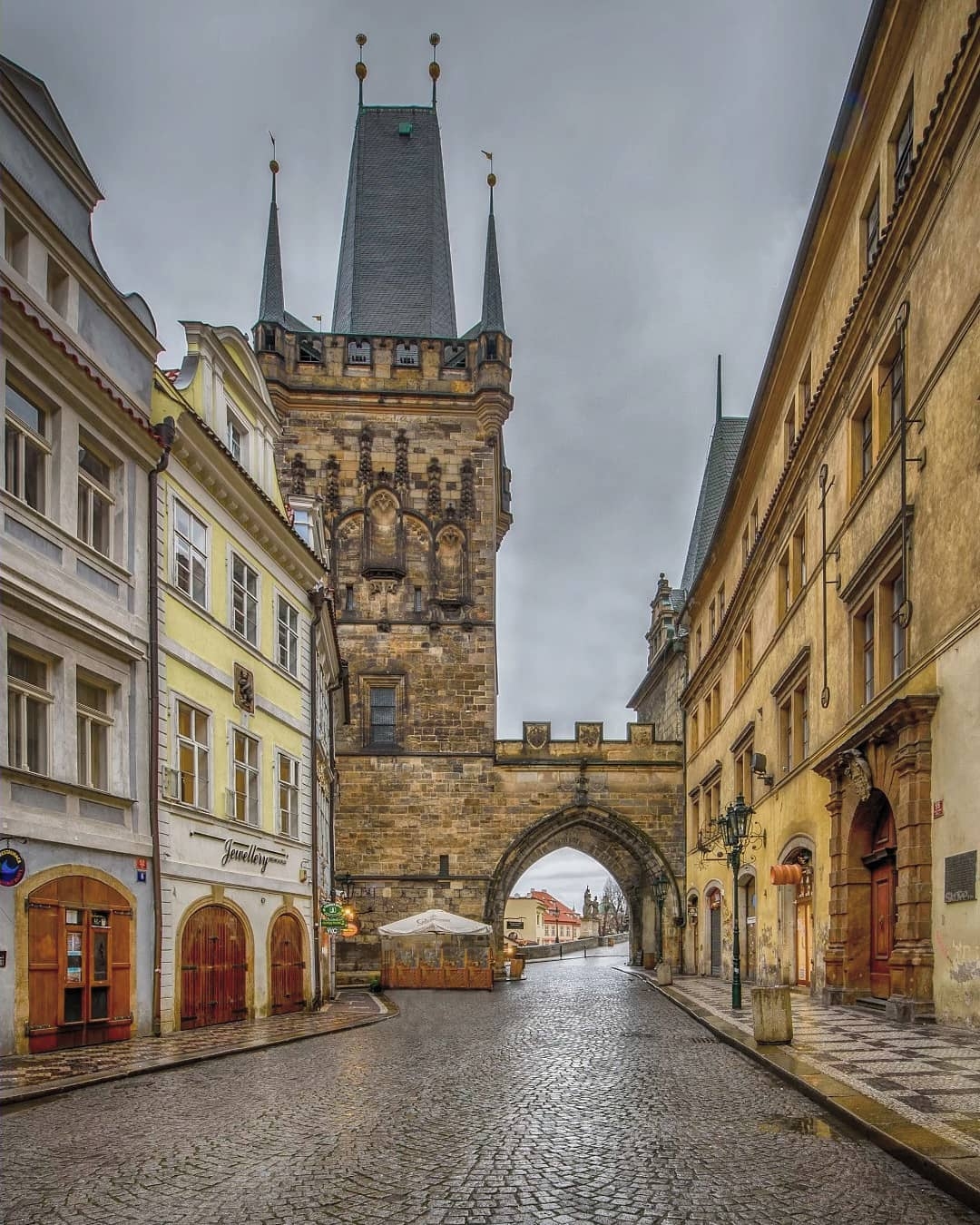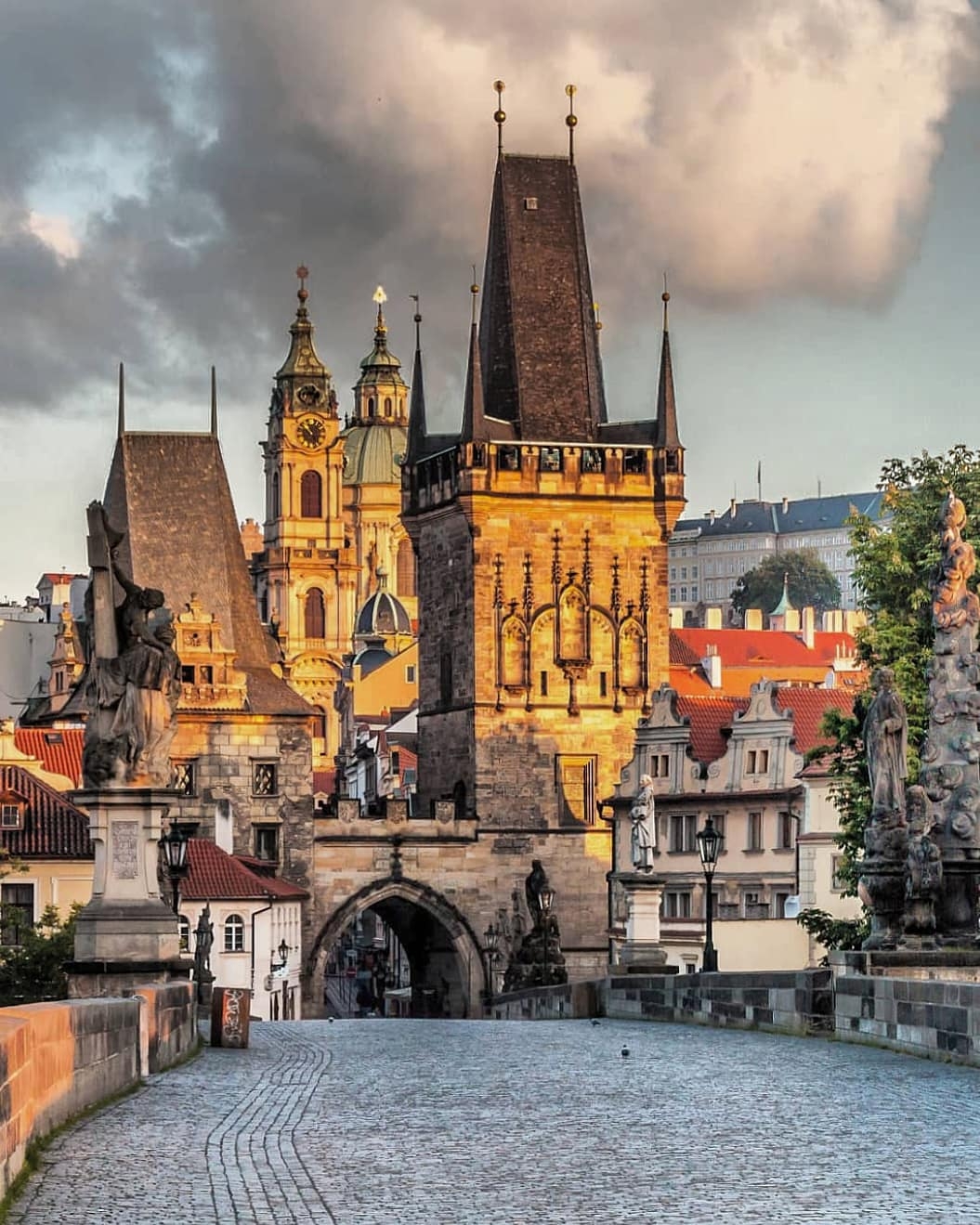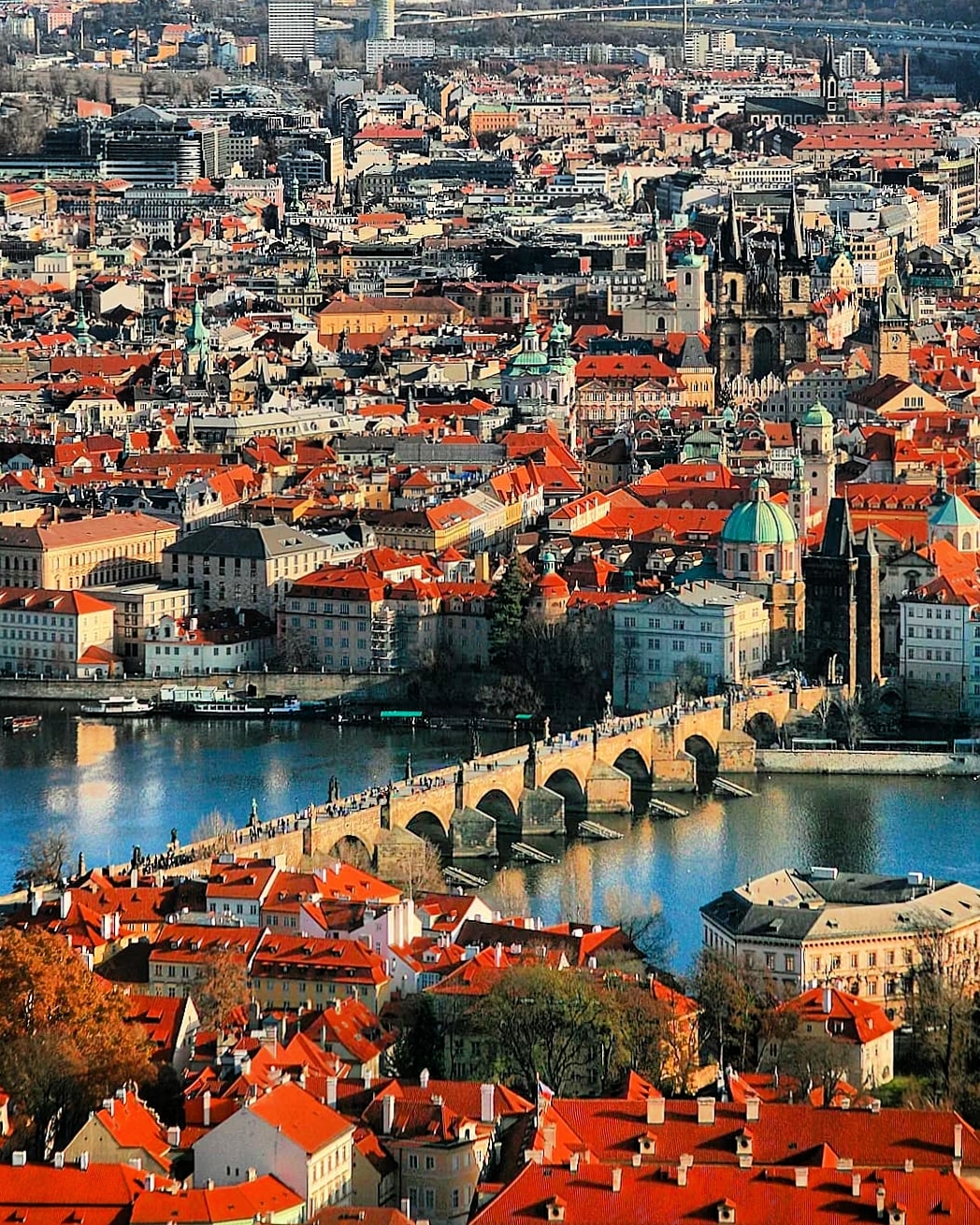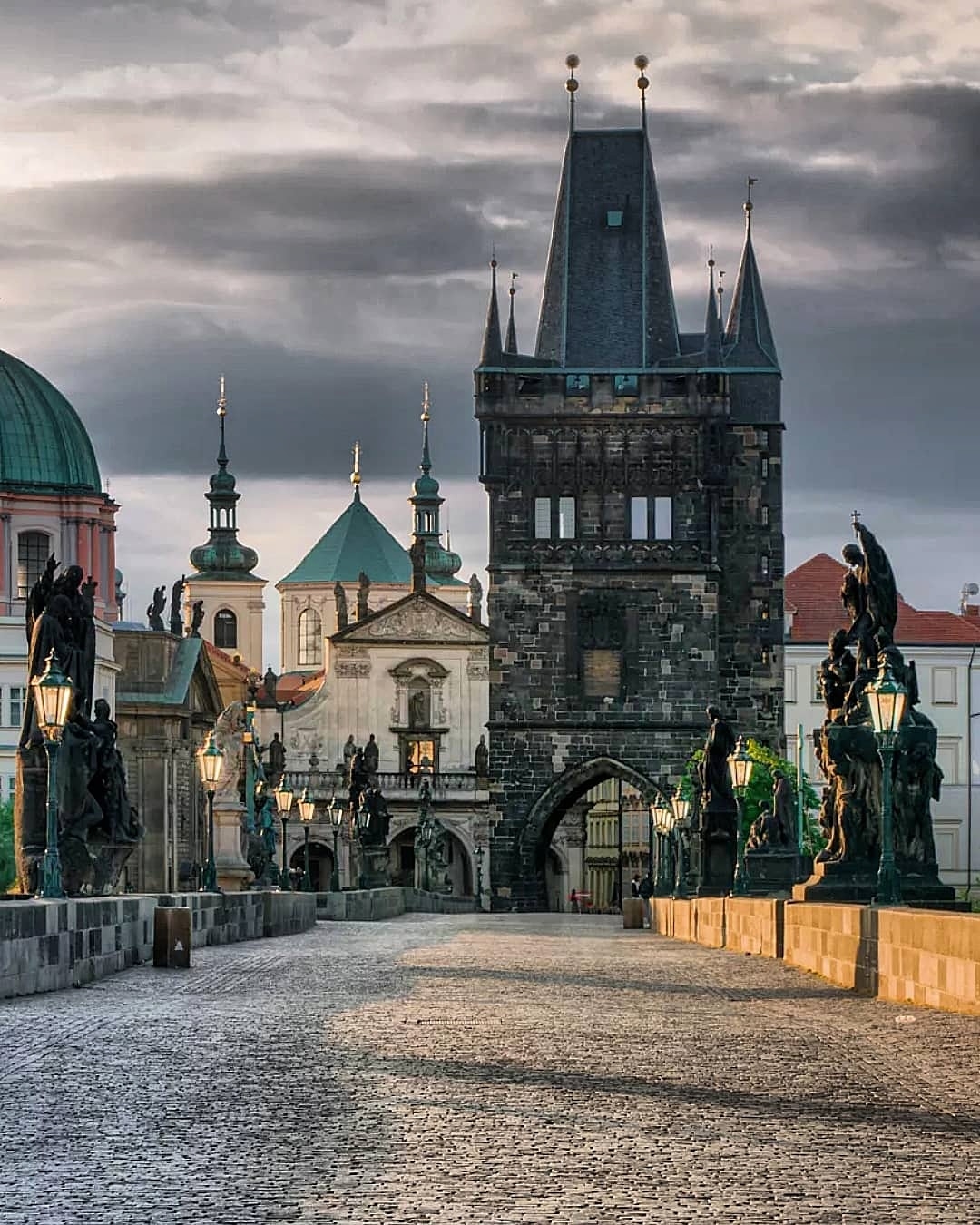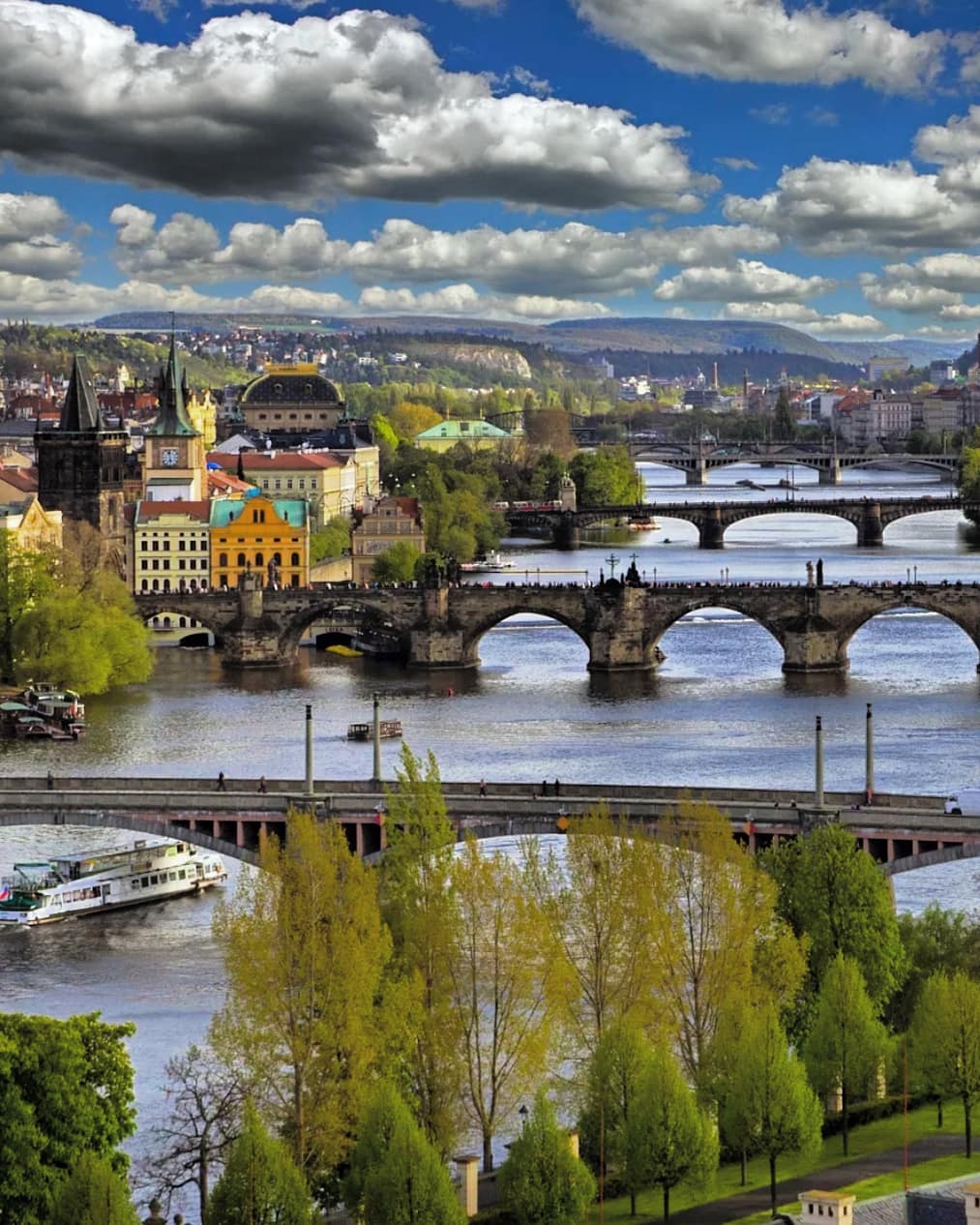THERE IS EIFFEL TOWER IN PARIS, THE COLOS-SEUM IN ROME, BUT IN PRAGUE, THERE IS CHARLES BRIDGE AS THE PEARL OF MEDIE-VAL ARCHITECTURE.
The foundation and existence of the Charles bridge are surrounded by innumerable legends and mysteries .The fi rst stone of the bridge was laid by order of Charles IV at a carefully chosen time: in 1357, on 9th July at 5.00 hrs. and 31 minutes. The day was a conjunction of the Sun and the Saturn, which was considered by the medieval astrologers as the most desirable moment of the year – the unfavorable in fluence of the Saturn planet was blocked by the rays of the Sun. A certain role was played also by the magic of odd numbers: the whole date represents a symmetrically ascending and descending series: 1-3-5-7-9-7-5-3-1. The bridge, which belongs to the oldest medieval bridges in Europe (measures 516 m, is 9,5 m, wide and rests on 16 arches) is a work of art of the famous builder, Peter Parler. It represents an outstanding technical structure made of sandstrone blocks.A few people know that the name “Charles” was not given to the bridge at the time of its origin but only in 1870. Until then, it was called Prague Bridge or just Stone Bridge.It was Prague’s only bridge across the river until the end of the 19th century. As a strategically important object, the bridge was fortifi ed at both ends by towers. The Old Town Bridge Tower – built at the turn of the 14th century after a design by P. Parler. Above the gate are the crests of the lands of Charles IV, in the fi rst row you can fi nd the statues of Charles IV, St. Vitus, St. Wenceslas, and above them the statues of St. Adalbert (Vojtěch) and Sigismund. The Bridge Towers of Lesser Town – the smaller tower, a Romanesque structure, dates back to the 12th century while its current Renaissance shape is from 1591. The taller tower was built in 1464 under King George of Poděbrad. The tower exhibition is dedicated to the eventful history of the bridge. The gothic construction of the Charles Bridge is topped with a unique gallery of the baroque sculpture groups and individual sculptures. It is decorated with 30 statues and sculptures added gradually from the end of the 17th century (the earliest statue being that of St. John of Nepomuk). The youngest one is that of SS Cyril and Methodius in 1938. The sample of sculptural decoration was the bridge of Holy Angel in Rome.The sculptural group “The crucifi xion” (E.Max, 1861) stands at the place of the gothic cross of 14th century. The bronze sculpture of Christ was founded in 1629 year in Dresden by the German master Hans Hillger and placed at the bridge in 1657. The fi gures of the Virgin Mary and St. John standing on either side of Christ is the work of Max Emanuel, 1861. The gilded inscription in the ancient Jewish language, praising the God, was made in 1696 year at the means of unknown Jew who paid a fi ne for the profanation of the cross.The most impressive sculpture on the bridgeis “The dream of Saint Luitgard”, 1710. The sculptor Matiash Bernard Braun created this composition at the age of 26 years by the biblical legend about a blind religious who recovered her sight after she kissed Christ’s wounds.The sculpture composition “The Prague’s Turk” (Ferdinand M. Brokoff , 1714) is the most popular in the bridge. The composition was created by the order of the count Tune in honor of french Order of Trinitarians
that ransomed the Christians from the Turkish captivity. The sculpture represents the Turk with a dog guarding the prison. St.Ivan Hermit and the founders of the order – St. John of Matha and St. Felix of Valois are standing over them.The sculpture of the St. John of Nepomuk (Jan Brokoff ) is the most illustrious on the bridge. The sculpture was founded in 1683 in Nürnberg. According to the legend, the priest of the king Wenceslas IV. John of Nepomuk, confessed the wife of the king (in the left bas-relief). He refused to open the secret of confession to Wenceslas IV only under tortures. He was tormented to death and threw down from the Charles Bridge in 1393.bridge. The sculpture was founded in 1683in Nürnberg. According to the legend,the priest of the king Wenceslas IV. John o fNepomuk, confessed the wife of the king (in the left bas-relief). He refused to open nthe secret of confession to Wenceslas IV
only under tortures. He was tormented todeath and threw down from the Charles Bridge in 1393.

